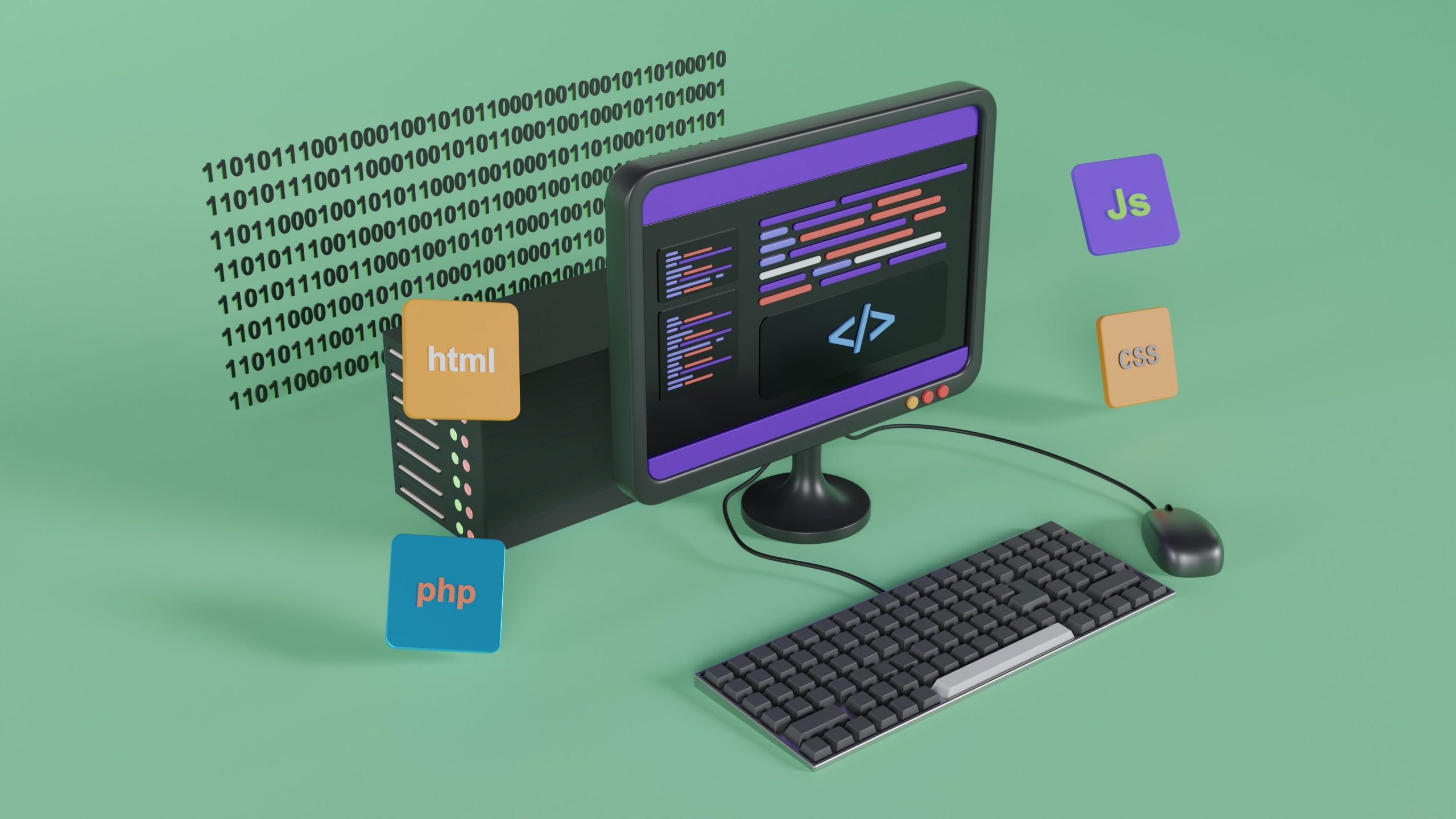In the dynamic field of application development, businesses are constantly seeking ways to optimize efficiency and foster innovation. An emerging strategy involves merging low-code and no-code development methods. These complementary approaches enable organizations to benefit from both rapid custom application creation (low-code) and user-friendly visual interfaces (no-code). This synergy empowers teams to efficiently address a wide range of requirements, from speedy prototyping to improved collaboration between technical and non-technical staff. This article explores how the strategic combination of low-code and no-code methodologies can drive innovation and agility in today’s competitive business environment.
Merging Low-Code & No-Code with Design Systems
The fusion of low-code and no-code development platforms with design systems is reshaping software development. This integration accelerates application creation, elevates user experience, and enforces design consistency. Low-code/no-code platforms simplify coding with visual interfaces and pre-built components, making development accessible to non-developers. Design systems provide structured design principles and components, ensuring a uniform, visually appealing user interface. This synergy streamlines the path from design to functional applications, encourages cross-functional collaboration, and promotes scalability. In this exploration, we delve into the potential, applications, and considerations of merging these elements, offering insight into a transformative approach that empowers organizations in the digital era. Here’s a concise overview of how to merge low-code & no-code with design systems:
Streamlined UX Design:
Design systems offer design principles and components. Integrating them with low-code/no-code tools helps UX designers efficiently translate designs into functional interfaces.Consistency and Branding:
Design systems maintain a consistent look and feel. Coupled with low-code/no-code, they ensure that generated code aligns with design guidelines, reinforcing brand identity.Efficient Component Reuse:
Design systems often include reusable UI components. Low-code/no-code platforms leverage these, speeding up development and ensuring UI consistency.Accelerated Development:
Low-code/no-code tools enable fast application development with minimal coding. Integrating them with design systems lets developers focus on functionality while design is handled seamlessly.Cross-functional collaboration:
This integration encourages collaboration between designers, developers, and stakeholders. Design assets in the system are accessible to low-code/no-code developers, fostering efficient teamwork.
No-code and low-code similarities and differences
No-code and low-code development are both innovative approaches to software development that aim to simplify and accelerate the process. However, they have distinct characteristics and applications:
Similarities:
Visual Development:
No-code and low-code platforms emphasize visual development, allowing users to build applications through drag-and-drop interfaces and pre-built components. This reduces the need for traditional coding.
Rapid Prototyping:
Both approaches enable quick prototyping and development, ideal for agile development practices and responding to changing business needs.
Reduced Development Time:
No-code and low-code solutions significantly reduce the time it takes to create and deploy applications, making them attractive for organizations looking to speed up their digital transformation.
Accessible to Non-Developers:
No-code and low-code platforms are designed to be user-friendly, enabling individuals with limited coding experience (or no coding experience, in the case of no-code) to participate in application development.
Differences:
Coding Level:
The most significant difference is the level of coding required. No-code platforms require little to no coding knowledge, making them accessible to non-technical users. On the other hand, low-code platforms may involve some coding or scripting, although it’s typically less complex than traditional coding.
Flexibility:
Low-code platforms offer more flexibility and customization options compared to no-code platforms. Low code allows developers to write custom code when needed, providing greater adaptability for complex projects.
Complexity of Applications:
No-code platforms are better suited for simple to moderately complex applications like forms and workflows. Low-code platforms can handle more complex applications and integrations, making them suitable for broader use cases.
Scalability:
Low-code platforms are often more scalable and can support more significant and sophisticated applications with extensive data handling and integrations.
Learning Curve:
No-code platforms have a shallower learning curve, making them accessible to a broader audience. Low-code platforms, while easier than traditional coding, may require some technical knowledge and training.
Cost:
No-code platforms are often less expensive to implement and maintain, making them attractive for small businesses or projects with budget constraints. Low-code platforms may have higher costs due to their increased capabilities.
How enterprise businesses can use Low-code and No-code platform
Low-code and no-code platforms have emerged as powerful tools for enterprise businesses seeking to adapt, innovate, and streamline their operations in an increasingly digital world. These platforms offer a revolutionary approach to software development by enabling individuals with varying levels of technical expertise to design, build, and deploy applications quickly and efficiently. In this era of rapid technological change and evolving customer demands, enterprise organizations are finding innovative ways to leverage low-code and no-code platforms to their advantage. This article explores the numerous ways in which businesses can harness the potential of these platforms to drive growth, improve efficiency, and foster innovation, ultimately giving them a competitive edge in the dynamic business landscape.
Accelerated Application Development:
Low-code and no-code platforms allow businesses to build applications faster than traditional coding methods. This speed is crucial for rapidly changing industries and markets.
Custom Application Development:
Enterprises can create custom applications tailored to their specific needs without relying heavily on IT departments. This customization ensures that software solutions align with unique business requirements.
Workflow Automation:
These platforms excel at automating repetitive tasks and business processes. By automating workflows, businesses can improve efficiency, reduce errors, and free up employees to focus on more strategic tasks.
Legacy System Integration:
Low-code and no-code tools can integrate with existing legacy systems and databases. This modernization of legacy applications ensures data consistency and facilitates a more cohesive technology stack.
Mobile App Development:
Building mobile apps becomes more accessible, allowing enterprises to improve customer engagement and provide employees with mobile tools for enhanced productivity.
Low-code vs. no-code: when to use what
Low-code and no-code platforms each have their unique strengths and use cases, and choosing between them depends on various factors, including the complexity of the project, the technical skills of the team, and the specific needs of the business. Here’s a guide to help you determine when to use low-code and when to use no-code:
When to Use Low-Code:
Complex Application Development:
Low-code platforms are better suited for projects that require more complex, customized functionality. If your application involves intricate logic, extensive integrations, or advanced data processing, low code provides more flexibility.
In-House Development Teams:
If you have a skilled development team with coding experience, low-code platforms can complement their efforts. These platforms allow developers to leverage their coding skills while still benefiting from the visual development environment.
Integration with Legacy Systems:
When you need to integrate with existing legacy systems or databases, low-code platforms provide greater control over the integration process. Developers can write custom code to handle specific integration requirements.
Custom User Interfaces (UI/UX):
For projects where a highly customized and sophisticated user interface is essential, low-code platforms offer more design flexibility. Developers can fine-tune UI elements to meet specific design requirements.
Security and Compliance:
If your project involves strict security and compliance requirements, low-code platforms often offer more robust options for implementing security measures and ensuring compliance with industry standards.
When to Use No-Code:
Simple Business Processes and Workflows:
No-code platforms are ideal for automating straightforward business processes, such as data collection, approvals, and notifications, without the need for complex logic or extensive coding.
Citizen Developers and Business Users:
When you want non-technical employees or citizen developers to create and maintain applications, no-code platforms are the way to go. They offer a user-friendly, visual interface that requires minimal coding knowledge.
Rapid Prototyping and MVPs:
No-code platforms are excellent for quickly prototyping ideas or building minimum viable products (MVPs). They allow for rapid development and experimentation without a heavy coding burden.
Small to Medium-Scale Projects:
Smaller projects with limited complexity and simpler requirements can benefit from the speed and ease of development offered by no-code platforms.
Time-Critical Solutions:
When you need to deliver a solution quickly, no-code platforms can expedite development, as they often require less time for coding and testing.
Challenges of low-code and no-code development
While low-code and no-code development approaches offer numerous benefits, they also come with their own set of challenges that organizations need to be aware of and address. Here are some of the key challenges associated with these development approaches:
Limited Customization:
Low-code and no-code platforms are designed to simplify development, but this can sometimes result in limitations when it comes to highly customized or complex solutions. Organizations may find it challenging to achieve specific functionalities or unique user experiences.
Scalability Concerns:
No-code platforms, in particular, may struggle to handle large-scale enterprise applications or projects that require significant scalability. As the project grows, organizations may face performance and infrastructure limitations.
Integration Complexity:
While these platforms offer integration capabilities, integrating with certain legacy systems or complex third-party APIs can be challenging. Organizations may need to rely on custom coding for more intricate integrations.
Vendor Lock-In:
Using a specific low-code or no-code platform may lead to vendor lock-in. Transitioning away from a particular platform can be challenging and costly, especially if the organization’s applications are tightly integrated with platform-specific features.
Limited Access to Source Code:
With limited or no access to the underlying source code, organizations may have reduced control over the security, performance, and long-term maintenance of their applications.
Are low-code and no-code the future of app development?
Low-code and no-code development platforms are indeed playing an increasingly significant role in the landscape of app development, and they are likely to continue to grow in importance in the future. While low-code and no-code platforms are poised to play an increasingly prominent role in app development, they are not likely to entirely replace traditional custom development methods. Instead, they will coexist alongside other methods and serve as valuable tools for specific use cases, such as rapid prototyping, citizen development, and automating routine tasks. The future of app development is likely to be a hybrid landscape where organizations choose the most appropriate approach based on their specific needs and priorities. Let’s delve into a more detailed analysis of whether low-code and no-code development represent the future of app development:
Rapid Growth and Adoption:
Low-code and no-code platforms have experienced rapid growth and adoption across various industries. This trend is driven by the need for organizations to quickly develop and deploy applications in response to market demands and changing business requirements. As these platforms continue to evolve and mature, their adoption is likely to expand further.
Democratization of Development:
One of the key drivers behind the popularity of low-code and no-code is their ability to democratize application development. They empower non-technical users, often referred to as “citizen developers,” to create applications without extensive coding skills. This shift in development capabilities can lead to increased innovation and agility within organizations.
Accelerated Time-to-Market:
Low-code and no-code platforms excel at accelerating the development process. Businesses can create prototypes, minimum viable products (MVPs), and even full-scale applications much faster compared to traditional coding methods. This speed is invaluable in today’s fast-paced business environment.
Addressing the Skills Gap:
The shortage of skilled software developers is a persistent challenge in the tech industry. Low-code and no-code platforms help bridge this skills gap by enabling individuals with limited coding knowledge to participate in application development. This makes organizations less reliant on a scarce pool of developers.
Cost Savings:
By reducing the need for extensive custom coding and speeding up development cycles, low-code and no-code platforms can lead to cost savings for organizations. They require fewer developers and less time, effort, and resources to create and maintain applications.
The Bottom line
The bottom line is that low-code and no-code development are indeed shaping the future of app development. Their rapid growth, democratization of development, time-to-market advantages, and cost savings make them invaluable tools for organizations seeking agility and innovation. However, they are not replacements for traditional development but rather complementary approaches that will coexist in the app development landscape. The extent to which they influence the future will depend on factors like evolving capabilities, industry-specific adoption, and effective management of challenges. Organizations that embrace these platforms strategically can position themselves for greater competitiveness and responsiveness in the digital era.























